WDFW Approves razor clam tides: May 10th- May 15thTides Last tides of the season. Halibut Season Starts May 1st Bottom Fishing opens March 8th
Cleaning and Preparing Crab
After a day or weekend of crabing while visiting Grays Harbor Beaches, the work just begins to clean and prepare your catch.
Dungeness and Red Rock Crab Identity
Identifying the two species is easy. Dungeness Crab have white claws and Red Rock crab have black claws.
Before cleaning and preparing crab you must make sure of the sex, size and species of Dungeness or Red Rock Crab.
If Dungeness Crab, only the males which are at least 6 1/4' across their backs can be kept. All females must be returned to the water.
Red rock crab you may keep both the males and females.
To avoid getting pinched while sexing the crab either hold the crab on its back or grab its hind part.
Checking Gender
Examine the crab. A female crab’s abdomen or tail flap, which is folded closely against its underside, is much broader and rounder than the male’s. Also, the comb-like fringe of hair around the edges of the tail flap is long in the female but rather short and barely noticeable in the male.
Also before cleaning and preparing crab you must check size. To legally keep a Dungeness crab, its shell (carapace) must be at least 6¼ inches wide (see how to measure with a shellfish gauge).
The shell of a red rock crab must measure at least 5 inches across. Any crab you don’t keep should be gently returned to the water to protect their delicate internal body parts.
Identifying Soft-Shell Crab
Make sure you to check if the crab is soft-shell or not. You are REQUIRED to release soft-shell crab. There is no cleaning and preparing crab that have soft shells.
Storing & Transporting Crab
Crab should be kept alive and cooked as soon as possible. It’s essential to keep crab cool and damp until you are ready to cook them.
Place the crabs into an ice chest and cover them with burlap or a towel soaked in salt water. Place ice over the burlap or towel to keep them cool. Don’t store crabs in water because they may not get enough oxygen.
If you purchase cooked crab, again place in a cooler with ice for the trip home. Most of the local seafood shops are glad to put your crab and other seafood on ice for you if you ask.
Cleaning and Preparing Crab Two Ways
Although most crabs are
either alive or have been killed just prior to cooking, they certainly are safe
to use if you know they are fresh, i.e., dead for only a few hours.
You’ll need a large pot for boiling, a small mallet or hammer, a nutcracker and a small fork for cleaning and preparing crab.
1. Cook it, then clean it.
The easiest way to prepare your crab for eating is to cook it first and then clean it.
Here’s how to proceed:
1. Use about ¼ cup of salt per gallon of fresh water and bring to a boil. Immerse the whole crab and again bring the water to boiling. Boil for about 18-20 minutes.
2. Remove the crab from the pot and rinse under cool water to stop the cooking process and cool the shell for handling.
3. Remove the abdomen with your fingers (also called the apron, it is the flap of shell on the underside of the crab).
4. Remove the outer shell (the back of the crab, also called the carapace) by sticking your thumb into the hole left from removing the abdomen and lifting up firmly.
5. The shell will detach from the body with some guts attached.
6. Remove and discard the leaf-like, spongy gills from either side of the body.
7. Rinse out the greenish-brown guts. Break off and discard the mandibles, which are the mouthparts at the front of the crab.
8. Turn the crab upside down, grip it on either side and place your thumbs underneath near the midline on the back (where the shell used to be).
9. Push up with your thumbs and pull down with your hands; the crab will crack easily along its center line.
10. Pull all of the large chunks of meat out of the body, then break open the legs and claws using a mallet or nutcracker.
2. Clean it, then cook it.
Many people prefer to clean their crabs before cooking. The resulting sections require less water for boiling and result in a cleaner table product.
If handling live crabs proves to be a problem when removing the back, the crab can be killed quickly by a blow to the abdomen.
Here’s how to proceed:
1. Remove the abdomen with your fingers (also called the apron, it is the flap of shell on the underside of the crab).
2. Remove the outer shell (the back of the crab, also called the carapace) by sticking your thumb into the hole left from removing the abdomen and lifting up firmly.
3. The shell will detach from the body with some guts attached.
4. Remove and discard the leaf-like, spongy gills from either side of the body.
5. Rinse out the greenish-brown guts. Break off and discard the mandibles, which are the mouthparts at the front of the crab.
6. Turn the crab upside down, grip it on either side and place your thumbs underneath near the midline on the back (where the shell used to be).
7. Push up with your thumbs and pull down with your hands; the crab will crack easily along its center line.
8. Immerse crab sections into boiling water for about 12 minutes. Use water somewhat less salty than used for whole crabs (see 1.1 above)
Crab Recipes
CRAB SALAD
Ingredients:
- 1 to 2 loafs of bread
- Butter
- Small-Med Onion chopped
- 6-8 hard boiled eggs
- 2 whole crabs shelled or approximately 2 pounds of preshelled crab
- 2-3 cans shrimp
- 12 oz jar real Mayonnaise
Butter bread both sides and cut into 1 inch squares. Add chopped onions and hard boiled eggs (Chopped up). Refrigerate for 24 hours
Next day:
- Add crab and shrimp
- Mix in mayonnaise to desired moisture.
Enjoy!
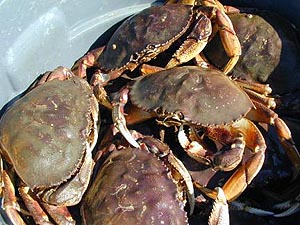
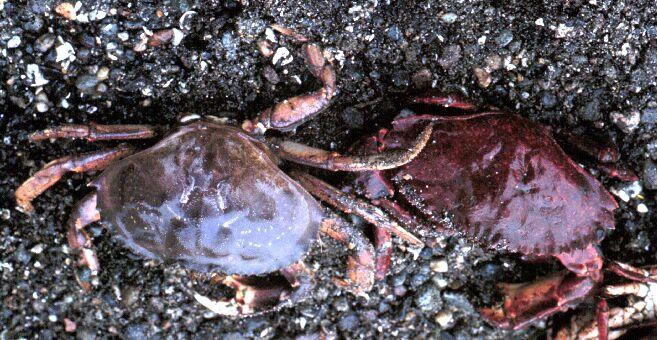

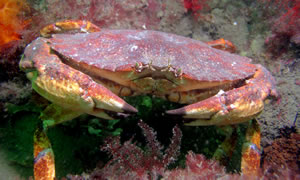
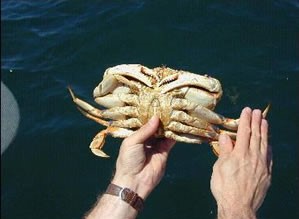
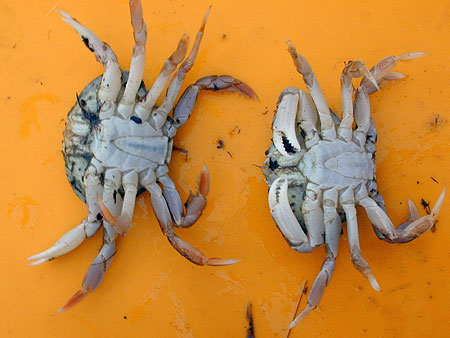
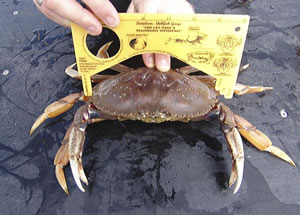
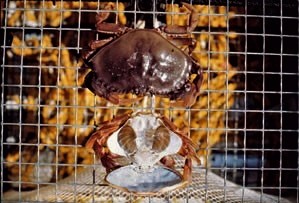
 Webcam Westport, Washington
Webcam Westport, Washington